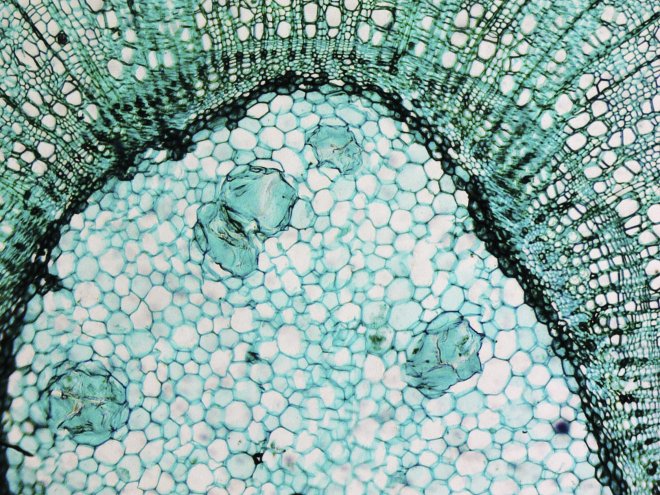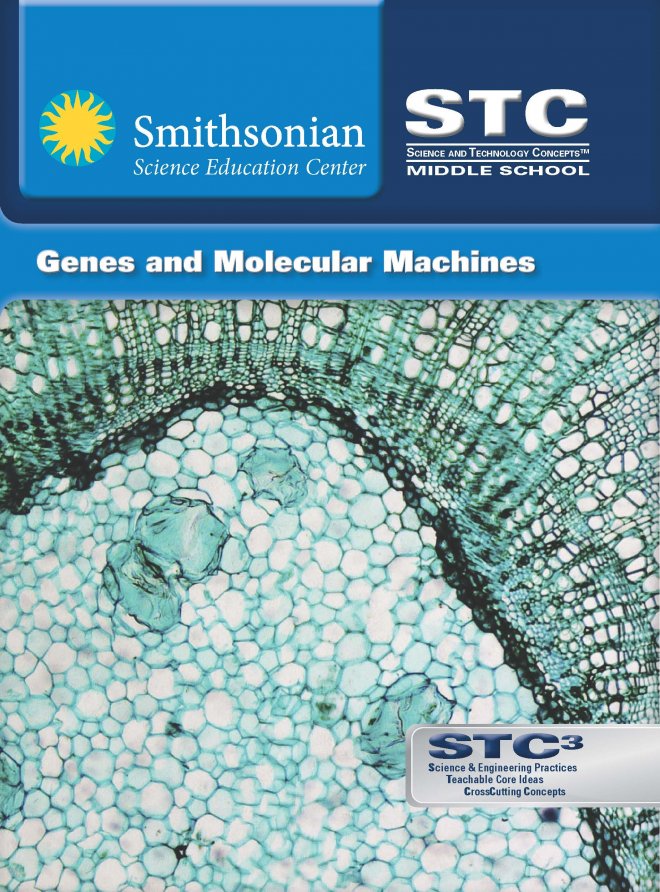STCMS™: Genes and Molecular Machines
Why do some children look like their parents while others do not? How do we determine what traits will be passed from one generation to the next? All living organisms reproduce and pass their traits to their offspring. In understanding how these traits are inherited, humans can influence the traits that organisms have. The Smithsonian Science Education Center presents Genes and Molecular Machines, an STCMS™ curriculum unit designed from the ground up to align to the Next Generation Science Standards. Science and engineering practices, teachable core ideas, and crosscutting concepts are integrated in every lesson. Join us as we gather evidence and make predictions about reproduction and heredity!
You can find all Blackline Masters here. For teacher Lesson Masters and unit Written Assessments, go to Carolina Science Online.
Lesson 1- Pre-Assessment: Genes and Molecular Machines
Teacher's will find this to be a useful resources on common misconceptions from the .
Lesson 2- Cells
Ask students to look for detailed images of plant and animal cells online. Once they have found some clear and detailed images, have them draw and label both animal and plant cells and then ask them to identify the differences in each drawing.
NGSS: (supports MS-LS1-1)
Common Core: (SL.8.1, SL.8.4)
Lesson 3- Organism Reproduction
Ask students to read the Smithsonian article: In Nature, Virgin Births are Pretty Common. After reading the article, ask students to do further research and identify two other asexual animals and answer the following question about each animal.
1. What do you think are some evolutionary pressures that caused this species to be asexual?
2. How would this animal’s life be different if it was sexual?
NGSS: (supports MS-LS3-2)
Common Core: (RST.6-8.7)
Lesson 4- Cellular Reproduction
Have students make a flipbook that shows the different phases of Mitosis. Remind students to be as creative as possible as they create their illustrations. Once students are finished creating their book have them flip through the pages quickly to create an animated effect while they explain the process of Mitosis.
NGSS: (supports MS-LS3-2)
Common Core: (RST.6-8.1)
Lesson 5- Genetics
Ask students to read the following Smithsonian articles about genetically modified foods and genetically engineered foods:
New Report Says Genetically Engineered Crops Are Safe-But Its Complicated and Sorry Hipsters, That Organic Kale Is A Genetically Modified Food .
Once students are done reading, have them take the side of either pro genetically modified foods or against genetically modified foods. Students should talk about the ethical and environmental issues surrounding this topic and make a clear point as to why they are either pro GMO or against.
NGSS: (supports MS-LS3-2)
Common Core: (SL.8.1; RST-6-8.1)
Lesson 6- DNA to Trait
Ask students to read the Smithsonian Blog Post Your Best Friend's Genes and answer the following questions in paragraph format :
Choose your favorite dog breed and then list all the polygenic traits found in this breed
Compare your favorite dog breed with another dog breed, compare and contrast the different types of traits between the two breeds. What are some mutations that have helped each breed evolutionarily?
NGSS:
Common Core:
Lesson 7-Successful Reproduction of Offspring
Have student watch Explore Smithsonian: How Do Orchids Attract Pollinators. Orchids come in many different shapes and sizes, have student do internet research on the different types of orchids, ask them to choose their favorite type and then have them draw a picture of a creature that has the genetic modifications necessary to pollinate that orchid. Encourage students to be creative as possible with the main objective being for student to design a creature that can successfully pollinate the orchid.
NGSS: (supports: MS-LS1-4)
Common Core: (RST.6-8.9; RST.6-8.1)
Lesson 8- Variation
Students have learned about the importance of genetic variation, but what happens if there is not enough variation to ensure the species survival. Have students research times when scientists created genetic variation to help sustain a dying population. (Some examples of this include the endangered Florida panther or black bears in Arkansas and Louisiana.) Ask students to write an essay about how scientists created the genetic variation within a particular species and about the effects the variation has had on the species and its habitat. NGSS: (supports MS-LS3-2)
Common Core: (SL.8.1)
Lesson 9- Selection
Ask students to watch this Good Thinking VideoNatural Selection: Common Misconceptions on the misconceptions of genetic variation. Ask students to explain, in their own words, how natural selection works and also ask them to explain why genetic variation in a population is important. NGSS: (supports MS-LS4-4; MS-LS4-5)
Common Core: (RST.6-8.1)
Lesson 10- Human Manipulation
Ask students to design an animal or plant that could be genetically modified to survive in an unusual or hostile environment.
NGSS: Common Core: (SL8.4)
Lesson 1- Pre-Assessment: Genes and Molecular Machines
Six Things Everyone Should Know About Genetics
Read a brief overview about all the components of genetics.
Lesson 2- Cells
How Many Types of Cells are in the Human Body?
Lesson 3- Organism Reproduction
Sexual vs. Asexual Reproduction
Gain a deeper understanding of asexual and sexual reproduction by playing this fun interactive.
Lesson 4- Cellular Reproduction
What is Mitosis?
What is Meiosis?
Mitosis Versus Meiosis
Compare the similarities and difference between Mitosis and Meiosis.
Lesson 5- Genetics
Heredity: Crash Course Biology
Get the rundown on heredity with by watching this short video
Lesson 6- DNA to Trait
What does it Mean to be Human?
Read about what being human actually means.
Lesson 7-Successful Reproduction of Offspring
Plants and Animals Partners in Reproduction
Read about the relationship between plants and animals when it comes to pollination
Lesson 8- Variation
Smithsonian Study Reveals Decline of Genetic Diversity in Wild Cheetahs
Learn about why scientists are finding less genetic diversity in wild cheetah populations
Lesson 9- Selection
The Evolution of the Sweet Tooth
Do you have a sweet tooth? Read this article to find out why you like the sweeter things in life.
Lesson 10- Human Manipulation
Researchers are trying to Genetically Engineer Cows to Stay Cool
Read about how cows may become one of the coolest animals.


Kit Tips & Tricks